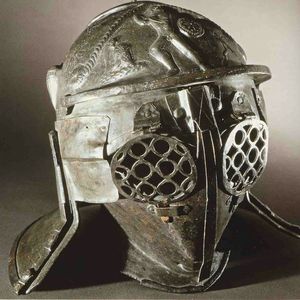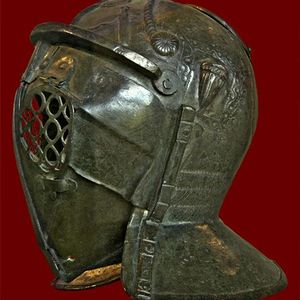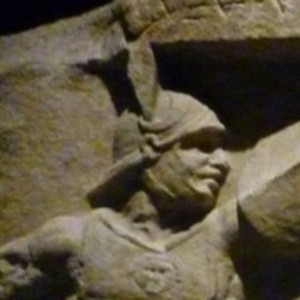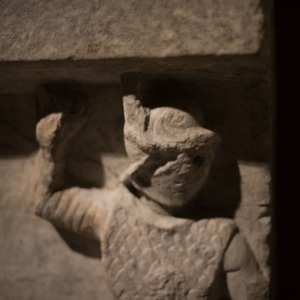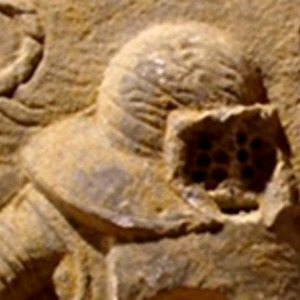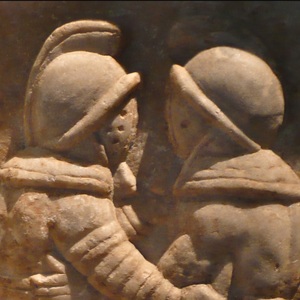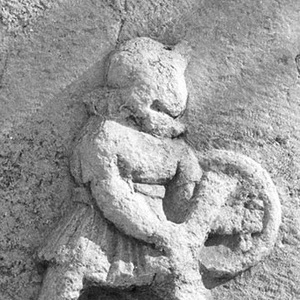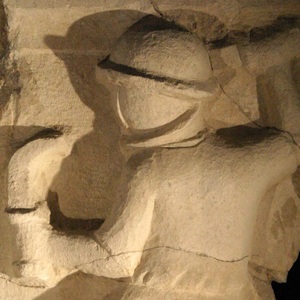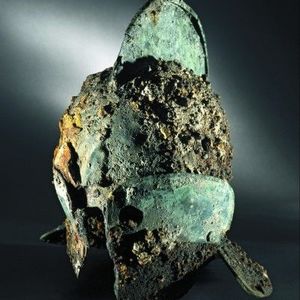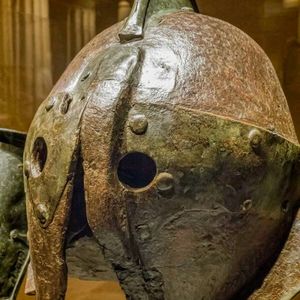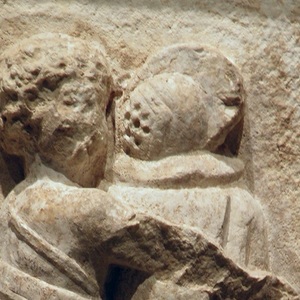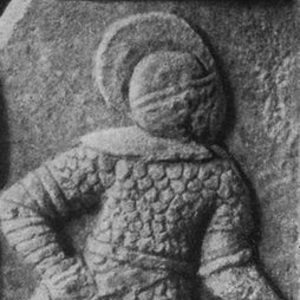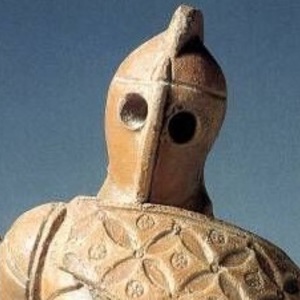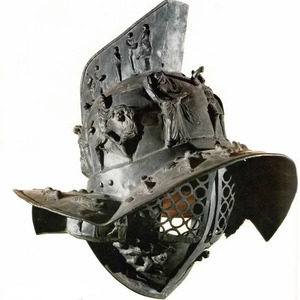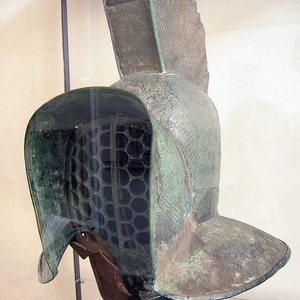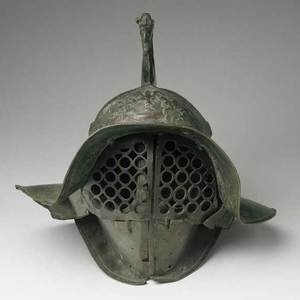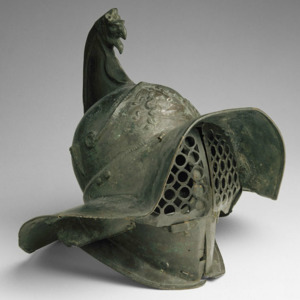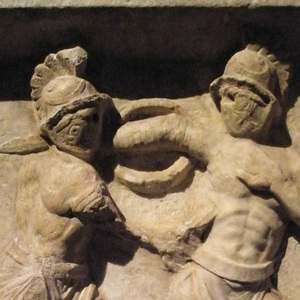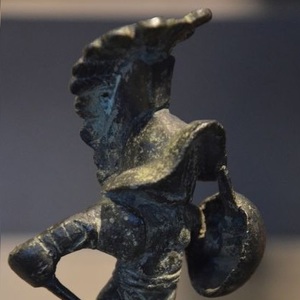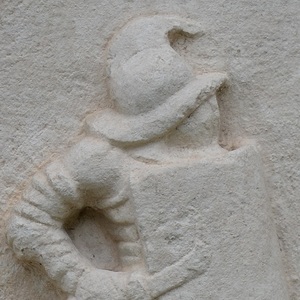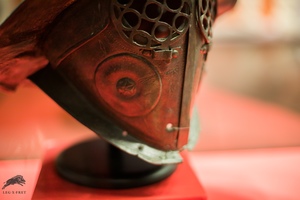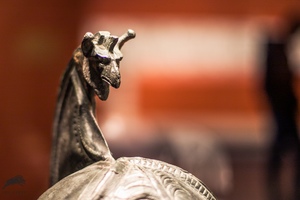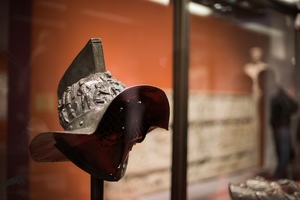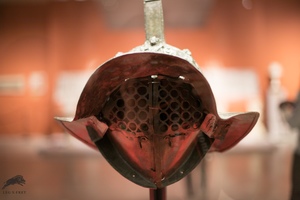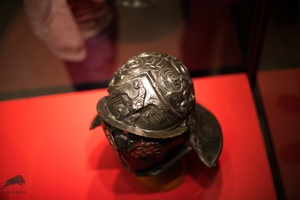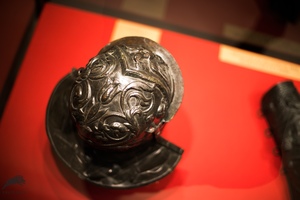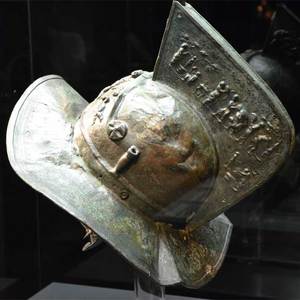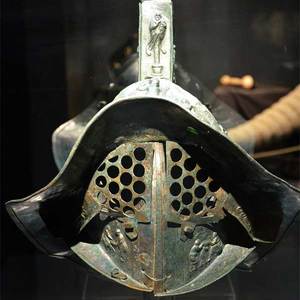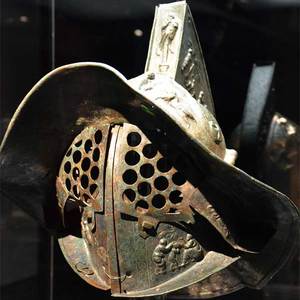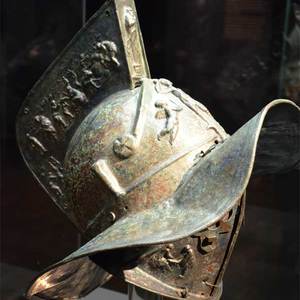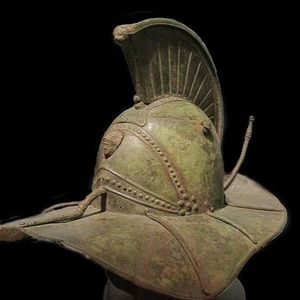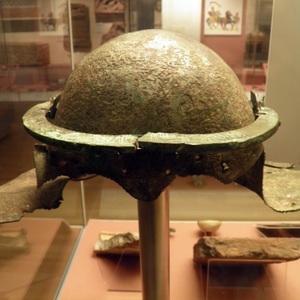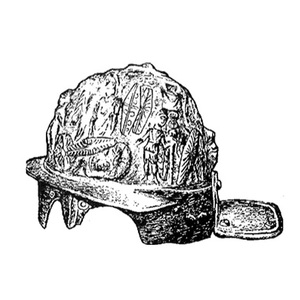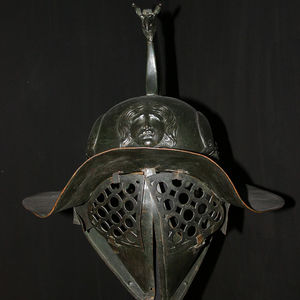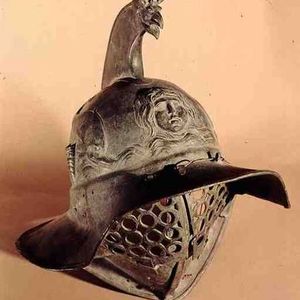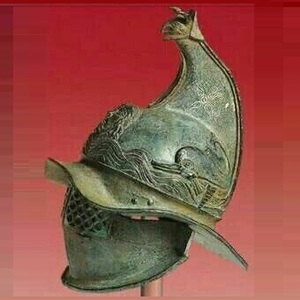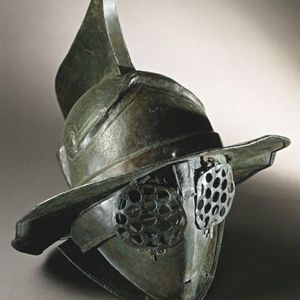Gladiator helmets
Galea or Cassis, the ancient Roman names for a helmet, refers to the unique design of gladiator helmets in antiquity. These helmets provided complete head protection, including the face. They were often richly adorned with engravings and had inserts for feathers. Gladiator helmets were made of bronze alloys. Another notable feature was that the type of helmet could vary significantly depending on the type of gladiator.
The helmets can be classified based on their structural features, and some groups of helmets were used by multiple types of gladiators.
- Type I: Provocator
- Type III: Murmillo, Hoplomachus, Thracian
- Hybrid type I-III: Dimachaerus, Eques
It should also be noted that there are helmets that only exist in pictorial sources.
Type I
Type I helmets are believed to have been primarily used by provocators. In terms of construction, they are most similar to classical infantry imperial helmets. The dome of the helmet is a unified structure with the typical shape of legionary helmets and a neck guard. It inherited the visor from upper strikes. The main differences are the cheekpieces, which in this case are expanded to form a full face mask, characteristic of gladiators, and other types of engraved helmet decorations.
One of the best-preserved examples of a Type I helmet is the Provocator helmet from Pompeii, found in the Portico of Theaters and housed in the National Archaeological Museum of Naples. It is made of bronze and is abundantly adorned with engravings. On the frontal part of the helmet, one of the supreme symbols of triumph, victory, and glory, an eagle holding a wreath, is displayed. The upper part of the helmet, extending to the back of the head, features rich vegetation, believed to symbolize victory, abundance, and good fortune. At the back of the helmet, there are depictions of the equipment of the provocator, including the helmet itself, sheaths, manicae, and a shield with a design. Interestingly, the helmet is also adorned, exemplifying a simple form of recursion. The frontal part also features two intricate engravings of human faces, presumed to represent gods. The helmet has perforations for inserting feathers. In addition to engravings, it has less prominent decorative elements, such as engraved patterns located between the main designs.
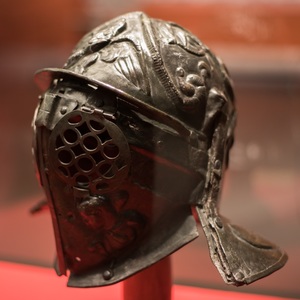 The provocateur's helmet. Bronze. Pompeii, portico of theaters. National Archaeological Museum, Naples, inv. no. 5658. Mid-1st century
The provocateur's helmet. Bronze. Pompeii, portico of theaters. National Archaeological Museum, Naples, inv. no. 5658. Mid-1st centuryIdentification of a helmet and associating it with a specific type of gladiator is not a trivial task due to the wide variety of gladiators depicted in artistic sources and the helmets that have been found. For example, provocators can be seen in reliefs that perfectly match the characteristics of the helmets found in Pompeii, as well as reliefs that clearly depict a slightly different type (Turkey). This might indicate local distinguishing features of gladiators that vary depending on the region. There are also artistic sources showing provocators with helmets without masks, which, apart from the feathers on the temples, closely resemble infantry helmets.
Gladiators such as equites and dimachaeri can also be considered suitable for this type of helmet. However, based on distinctive elements in artistic sources, the helmet can be characterized as an intermediate variant between the first and third types, with a very small visor extending around the perimeter of the dome. Nevertheless, these depiction features could also be artistic conventions, as no such helmets have been found.
Type II
Type II helmets were used by secutors and scissores. These helmets also had a neck guard at the back, but in some findings, it extended as a fragment of a relief mask. Unlike Type I helmets, they had a small crest at the top and significantly fewer engraved decorations, seemingly emphasizing practicality in their design. Another significant difference from other types of gladiator helmets was the absence of mesh on the eye openings for facial protection. Eye protection was achieved through smaller openings, which was probably a major drawback of such helmets.
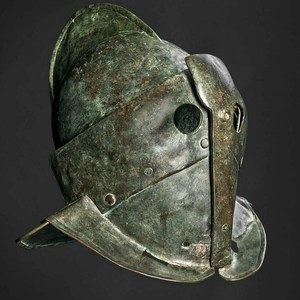 Gladiator helmet type II. Pompeii. National Archaeological Museum, Naples, Inv. 5643. Mid-1st century AD
Gladiator helmet type II. Pompeii. National Archaeological Museum, Naples, Inv. 5643. Mid-1st century ADDue to the limited number of structural elements, Type II helmets can be easily identified in reliefs. They are prominently visible on various artistic sources depicting secutors and scissores, such as frescoes, mosaics, reliefs, and figurines. It should also be noted that there are reliefs where scissores are depicted with a different type of helmet, resembling a hybrid of Type I and III.
Type III
Type III helmets were used by murmillos, hoplomachi, and Thracians. Murmillos and Thracians were the most popular types of gladiators, which is why there is a greater abundance of sources depicting them. These were composite helmets with a large dome, adorned with a crest. Sometimes feathers were attached to the crest, and they were also inserted into corresponding openings on the sides of the helmet. Another essential structural element was a wide brim encircling the dome, which gave the helmet a unique shape for the ancient era as a whole.
Let's consider one of the most interesting examples from the Pompeii collection, also found in the theater portico. This Type III helmet has a protective protrusion around its perimeter, which can be described as an elongated extension of the neck guard. The front part likely served more of a visual function. Above the protrusion, there is a relief depicting a triumph scene - on the sides, Victoria is depicted, followed by a barbarian taken captive, and a traditional triumph element called a "trophy." Unusually for gladiator helmets, the center features the depiction of a "Signum." The helmet has openings for feather insertion and a "cassette" for interchangeable crests, which were most likely worn for ceremonial appearances. Additionally, it is interesting to note that the eye mesh of this helmet could be opened independently of the cheekpieces.
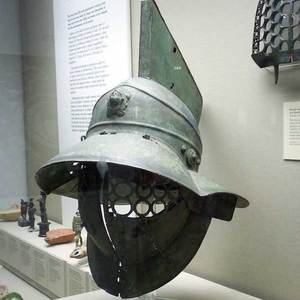 Gladiator helmet type III. Found in Pompeii. Bronze. Weight-2.8 kg. British Museum. Inv. 1946. 1st century AD
Gladiator helmet type III. Found in Pompeii. Bronze. Weight-2.8 kg. British Museum. Inv. 1946. 1st century ADThe main distinguishing feature of the Thracian helmet, setting it apart as a separate subtype, was a griffin positioned at the top of the crest. Like the classical murmillo helmet, it could be adorned with feathers, engravings, and embossments.
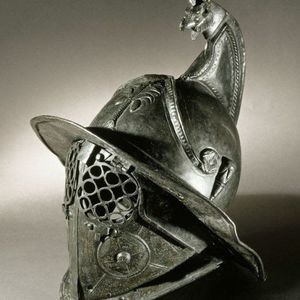 Gladiator helmet type III. Pompeii. National Archaeological Museum, Naples, Inv. 5649. Mid-1st century AD
Gladiator helmet type III. Pompeii. National Archaeological Museum, Naples, Inv. 5649. Mid-1st century ADType III helmets are easily recognizable in reliefs, frescoes, figurines, and mosaics. There is a vast amount of preserved examples, which provides significant information about this type of helmet.
Related topics
Gladiator, Roman Army helmets, Murmillo, Thracian, Provocator, Hoplomachus, Secutor, Scissor, Dimacher, Equit
Literature
- Coulston J.C.N. Gladiators and soldiers: personnel and equipment in ludus and castra // Journal of Roman Military Equipment Studies. Vol. 9. 1998. P. 1.
- Junkelmann M. Das Spiel mit dem Tod. Mainz am Rhein, 2000. S. 33.
- Welch K. The Roman arena in late Republican Italy: a new interpretation // Journal of Roman Archaeology. Vol. 7. 1994.
- Wiedemann T. Emperors and gladiators. L., 1992. P. 26.
- Waurick G. Helme der hellenistischen Zeit und ihre Vorläufer //Antike Helme. Handbuch mit Katalog. Monographien des Römisch-Germanischen Zentralmuseums. Band 14. Mainz, 1988. S. 159. Abb. 22.
- Vickers M. Recent acquisitions by the Ashmolean museum // Archäologischer Anzeiger. 1981. S. 559.
- A Boeotian helmet with volutes from the second century BC, presumably from Athens, is now in the Hamburg Museum of Arts and Crafts (Hamburg Museum für Kunst und Gewerbe). See: Dintsis P. Hellenistische Helme. (Archaeologica 43). Rome, 1986. Taf. 6, 2.
- Ritti Т., Yilmaz S. Gladiatori е Venationes a Hierapolis di Frigia // Atti della Accademia Nazionale dei Lincei. Ser. IX. Vol. X. Fasc. 4. Roma, 1998. P. 467.

 Gallery
Gallery






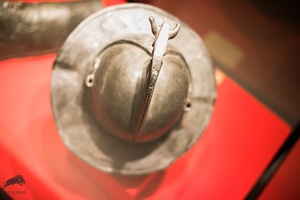 Gladiator helmet type III. Pompeii. National Archaeological Museum, Naples, Inv. 5649. Mid-1st century AD
Gladiator helmet type III. Pompeii. National Archaeological Museum, Naples, Inv. 5649. Mid-1st century AD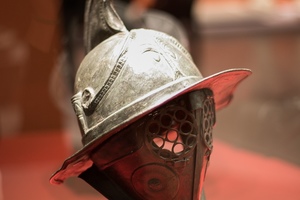 Gladiator helmet type III. Pompeii. National Archaeological Museum, Naples, Inv. 5649. Mid-1st century AD
Gladiator helmet type III. Pompeii. National Archaeological Museum, Naples, Inv. 5649. Mid-1st century AD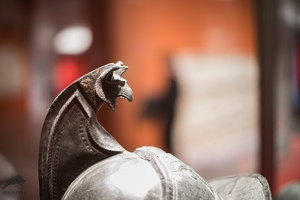 Gladiator helmet type III. Pompeii. National Archaeological Museum, Naples, Inv. 5649. Mid-1st century AD
Gladiator helmet type III. Pompeii. National Archaeological Museum, Naples, Inv. 5649. Mid-1st century AD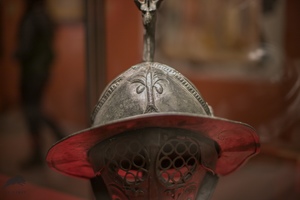 Gladiator helmet type III. Pompeii. National Archaeological Museum, Naples, Inv. 5649. Mid-1st century AD
Gladiator helmet type III. Pompeii. National Archaeological Museum, Naples, Inv. 5649. Mid-1st century AD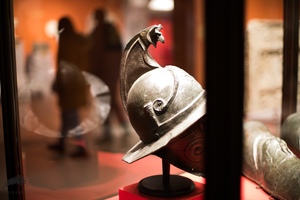 Gladiator helmet type III. Pompeii. National Archaeological Museum, Naples, Inv. 5649. Mid-1st century AD
Gladiator helmet type III. Pompeii. National Archaeological Museum, Naples, Inv. 5649. Mid-1st century AD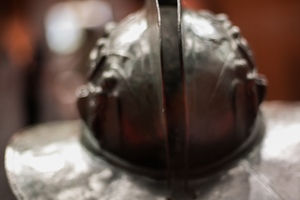 Gladiator helmet type III. Pompeii. National Archaeological Museum, Naples, Inv. 5674. Mid-1st century AD
Gladiator helmet type III. Pompeii. National Archaeological Museum, Naples, Inv. 5674. Mid-1st century AD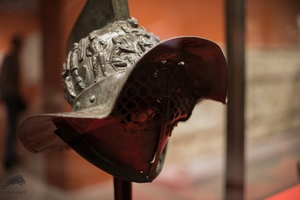 Gladiator helmet type III. Pompeii. National Archaeological Museum, Naples, Inv. 5674. Mid-1st century AD
Gladiator helmet type III. Pompeii. National Archaeological Museum, Naples, Inv. 5674. Mid-1st century AD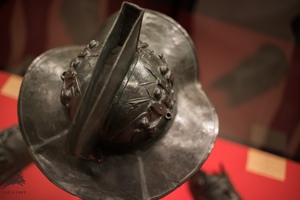 Gladiator helmet type III. Pompeii. National Archaeological Museum, Naples, Inv. 5674. Mid-1st century AD
Gladiator helmet type III. Pompeii. National Archaeological Museum, Naples, Inv. 5674. Mid-1st century AD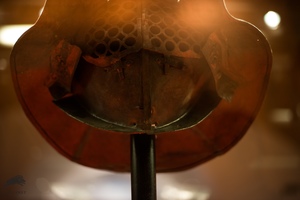 Gladiator helmet type III. Pompeii. National Archaeological Museum, Naples, Inv. 5674. Mid-1st century AD
Gladiator helmet type III. Pompeii. National Archaeological Museum, Naples, Inv. 5674. Mid-1st century AD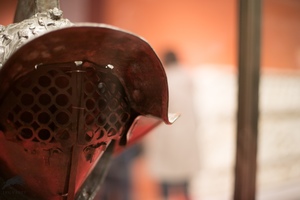 Gladiator helmet type III. Pompeii. National Archaeological Museum, Naples, Inv. 5674. Mid-1st century AD
Gladiator helmet type III. Pompeii. National Archaeological Museum, Naples, Inv. 5674. Mid-1st century AD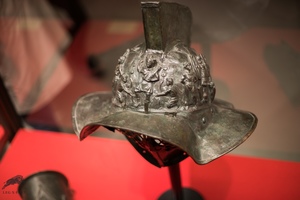 Gladiator helmet type III. Pompeii. National Archaeological Museum, Naples, Inv. 5674. Mid-1st century AD
Gladiator helmet type III. Pompeii. National Archaeological Museum, Naples, Inv. 5674. Mid-1st century AD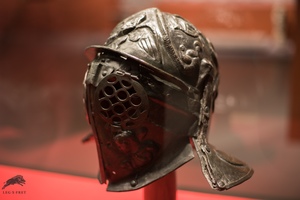 The provocateur's helmet. Bronze. Pompeii, portico of theaters. National Archaeological Museum, Naples, inv. no. 5658. Mid-1st century
The provocateur's helmet. Bronze. Pompeii, portico of theaters. National Archaeological Museum, Naples, inv. no. 5658. Mid-1st century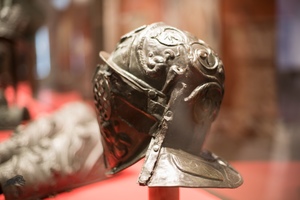 The provocateur's helmet. Bronze. Pompeii, portico of theaters. National Archaeological Museum, Naples, inv. no. 5658. Mid-1st century
The provocateur's helmet. Bronze. Pompeii, portico of theaters. National Archaeological Museum, Naples, inv. no. 5658. Mid-1st century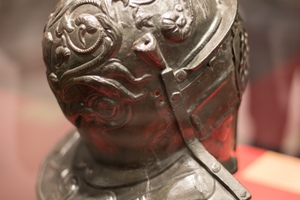 The provocateur's helmet. Bronze. Pompeii, portico of theaters. National Archaeological Museum, Naples, inv. no. 5658. Mid-1st century
The provocateur's helmet. Bronze. Pompeii, portico of theaters. National Archaeological Museum, Naples, inv. no. 5658. Mid-1st century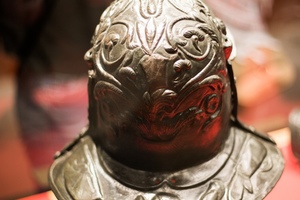 The provocateur's helmet. Bronze. Pompeii, portico of theaters. National Archaeological Museum, Naples, inv. no. 5658. Mid-1st century
The provocateur's helmet. Bronze. Pompeii, portico of theaters. National Archaeological Museum, Naples, inv. no. 5658. Mid-1st century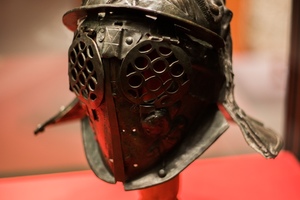 The provocateur's helmet. Bronze. Pompeii, portico of theaters. National Archaeological Museum, Naples, inv. no. 5658. Mid-1st century
The provocateur's helmet. Bronze. Pompeii, portico of theaters. National Archaeological Museum, Naples, inv. no. 5658. Mid-1st century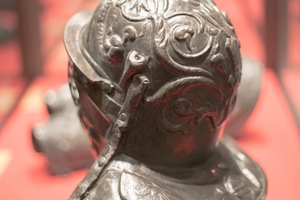 The provocateur's helmet. Bronze. Pompeii, portico of theaters. National Archaeological Museum, Naples, inv. no. 5658. Mid-1st century
The provocateur's helmet. Bronze. Pompeii, portico of theaters. National Archaeological Museum, Naples, inv. no. 5658. Mid-1st century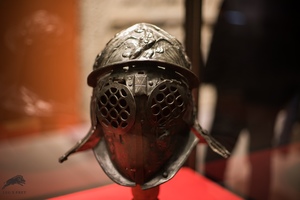 The provocateur's helmet. Bronze. Pompeii, portico of theaters. National Archaeological Museum, Naples, inv. no. 5658. Mid-1st century
The provocateur's helmet. Bronze. Pompeii, portico of theaters. National Archaeological Museum, Naples, inv. no. 5658. Mid-1st century